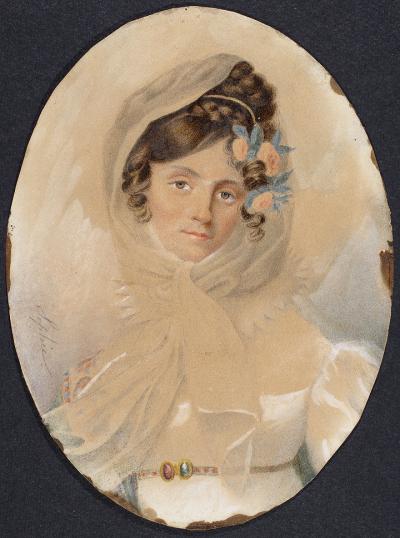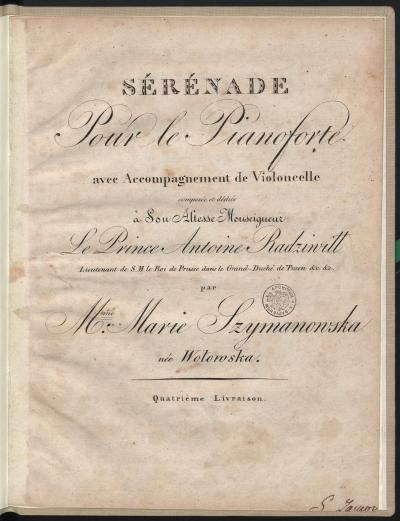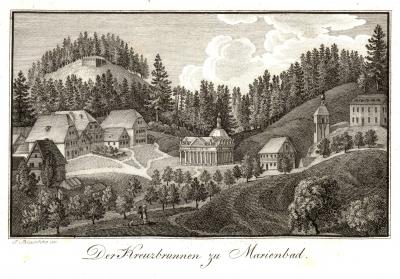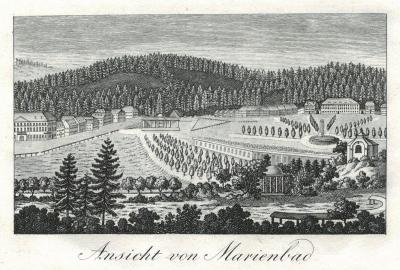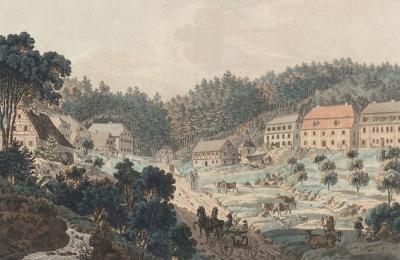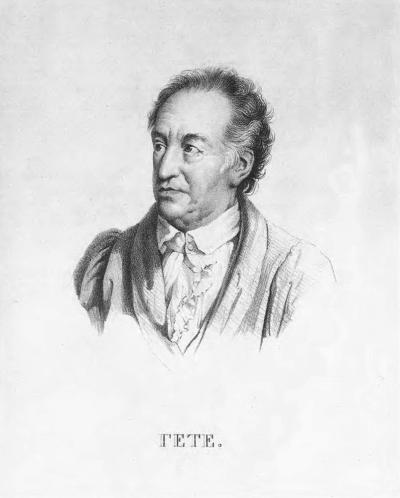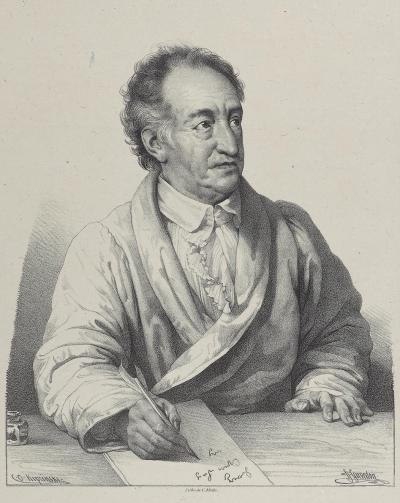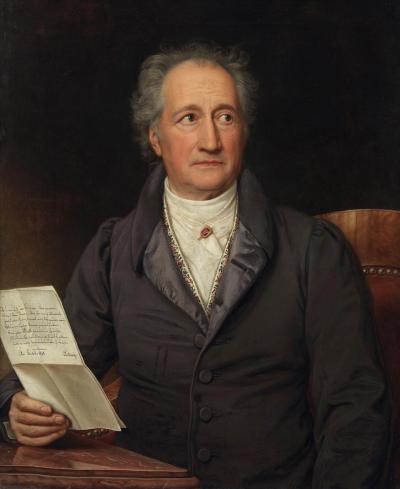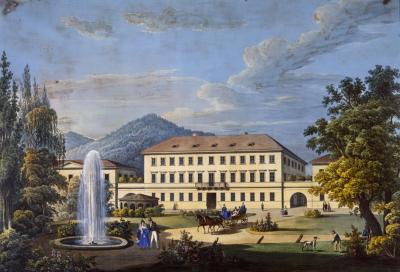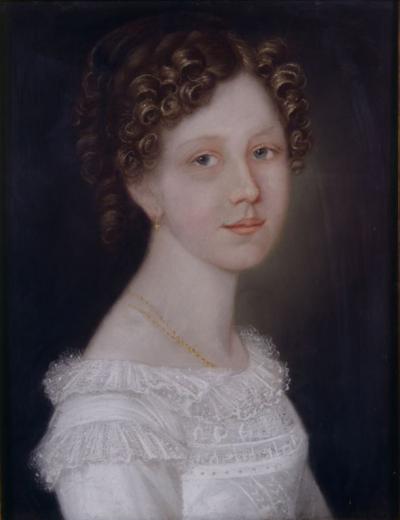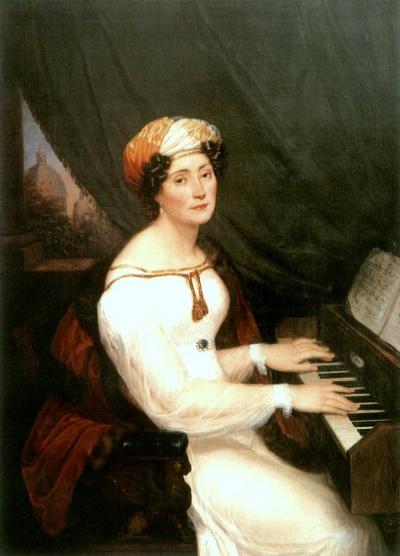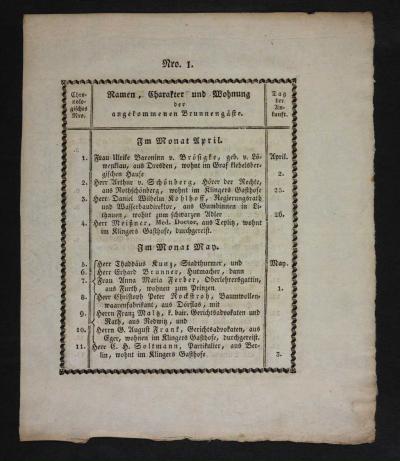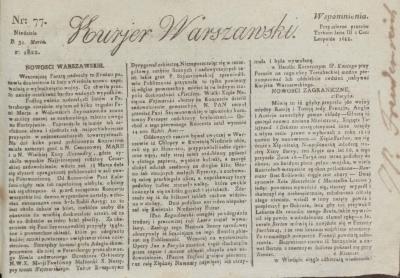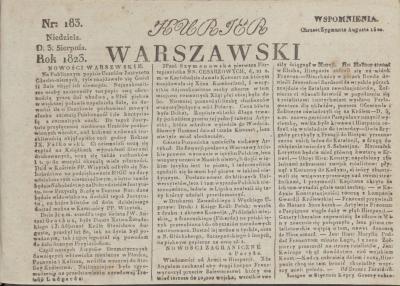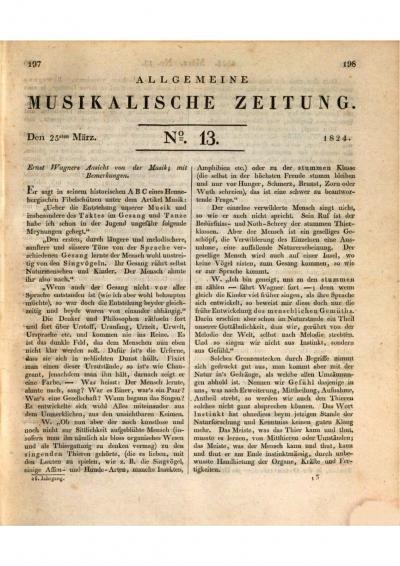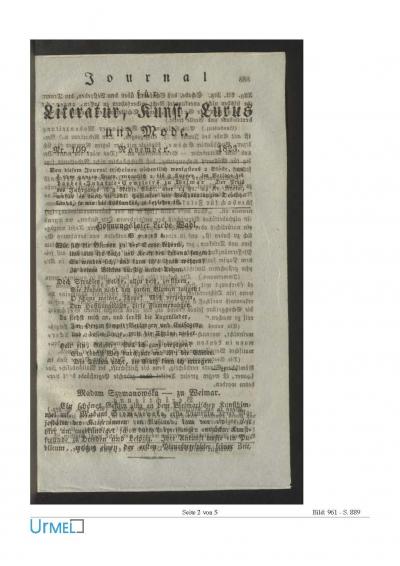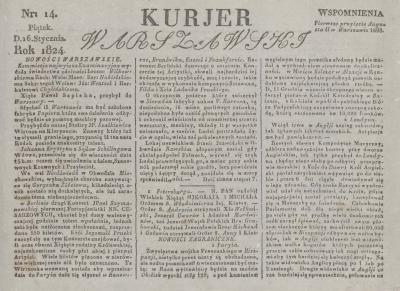Madame Szymanowska and Goethe – a burning love?

In 1819/20, Breitkopf & Härtel published six albums containing a total of sixty nine pieces that she had composed for piano[12] and which were dedicated to relatives, friends and other high-ranking personalities, including the Polish Prince Anton Heinrich Radziwill/Antoni Henryk Radziwiłł, Prussian governor in Poznań and member of the Prussian State Council, who was resident in Berlin(Fig. 2). Radziwill was himself a committed cellist and composer and had been working on a score for Goethe’s “Faust” since around 1810, a task that had apparently been conferred on him by Goethe’s friend Zelter. The Italian opera singer Angelica Catalani, who performed in Warsaw in November 1819, is said to have pushed Szymanowska to decide against her marriage and to opt for a career in music, whereupon Szymanowska filed for divorce. For two years, she worked on her piano technique, expanding her repertoire, teaching and giving concerts. In 1822, she gave a guest performance in St. Petersburg, where, after performing at the Czar’s summer residence, the title of First Court Pianist to the Czar’s mother and to Czar Elisabeth Alexejewna was bestowed upon her, a title which not only brought with it considerable prestige, but also solid annual financial support.[13] (PDF 2)
In February 1823, she undertook a concert tour through the Ukrainian towns of Kiev, Tultschyn, Schytomyr, Dubno, Kremenez and Lviv. After returning temporarily to Warsaw, where she gave a concert in May, she went on tour through Europe accompanied by her sister and her brother, who was responsible for organising the travel and the concerts. She gave concerts in Germany until the end of the year: Dresden in January, Leipzig in autumn, and Weimar, Dessau, Braunschweig and Berlin in the winter months. At the beginning of her concert tour, which was to take three years in the end, she travelled to Poznań in Prussia where she is said to have played a concerto by Johann Nepomuk Hummel and her own “Fantasie” on 29 and 30 June, as was reported by a Warsaw newspaper.[14]
She then travelled to Carlsbad in Bohemia, which at this time was already considered one of the most famous bathing towns in Europe[15], arriving on 6 July. Fourteen days later, on 21 July, as the Warsaw daily newspaper Kurjer Warszawski reported two weeks later, she gave a concert there in front of eminent personalities, including the Princess of Cumberland and around fifty Dukes and Duchesses. The number of Poles attending the concert, who were also visitors to the spa town, was no less than double this amount. Each of the recitals by the extraordinarily talented artist was met by rapturous applause. Before that, the famous Hummel had played a concert in Carlsbad, but he had attracted a smaller audience (PDF 3).[16] In truth, however, the stay in Carlsbad was really meant as a treatment for Szymanowska’s sister who was taking the baths because of a pain in her side, which Szymanowska reported in a letter to Pjotr Andrejewitsch Wjasemski, the author and friend of Alexander Puschkin, who was living in Moscow. She also wrote to him that she planned to meet Goethe in Marienbad and then to travel on to Dresden and Berlin.[17]
[12] Kijas 2010 (see Literature), page 17; various editions in the National Library of Warsaw/Biblioteka Narodowa w Warszawie on polona.pl, https://polona.pl/search/?filters=creator:%22Szymanowska,_Maria_(1789--1831)%22,public:0. – In all, 97 piano pieces and 30 vocal works by Szymanowska have survived (Bischler 2017, see Literature, pages 213, 403).
[13] The Warsaw daily newspaper Kurjer Warszawski reported that a private concert in front of the Czar’s family had earned the pianist the highest accolade. The public concert that followed on 18 March in the Petersburg Philharmonie was held in front of a capacity audience and yielded a return of 14,000 rubles with an entry price of 10 rubles. Amongst the pieces Szymanowska played was an adagio that Himel (sic!, Johann Nepomuk Hummel), orchestra director to the Grand Duchess Maria Pawlowna in Weimar, had composed for the pianist in St. Petersburg. (Nowosci Warszawskie, in: Kurjer Warszawski, No. 77, 31 March 1822, page 1 (see PDF 2), online resource: https://jbc.bj.uj.edu.pl/dlibra/publication/744066/edition/705906/content) – cf also Kijas 2010 (see Literature), pages 44 f.
[14] Gazeta Korrespondenta Warszawskiego i Zagranicznego No. 107 dated 7 July 1823, page 1227, online resource: https://polona.pl/item/gazeta-korrespondenta-warszawskiego-y-zagranicznego-1823-nr-107-7-lipca-dodatek,MTA0NjcwOTQ1/0/#info:metadata
[15] Carlsbad, in: Allgemeine deutsche Real-Encyclopädie für die gebildeten Stände. (Conversations-Lexicon.), sixth edition, volume 2, Leipzig 1824, page 335, online resource: https://opacplus.bsb-muenchen.de/Vta2/bsb10710721/bsb:1014597?queries=Carlsbad&language=de&c=default
[16] Nowosci Warszawskie, in: Kurjer Warszawski, No. 183, Warsaw, 3 August 1823, page 1, column 2 (see PDF 3), online resource: https://jbc.bj.uj.edu.pl/dlibra/publication/744468/edition/706308/content) – Compare also Kijas 2010 (see Literature), page 49
[17] Bischler 2017 (see Literature), page 63
